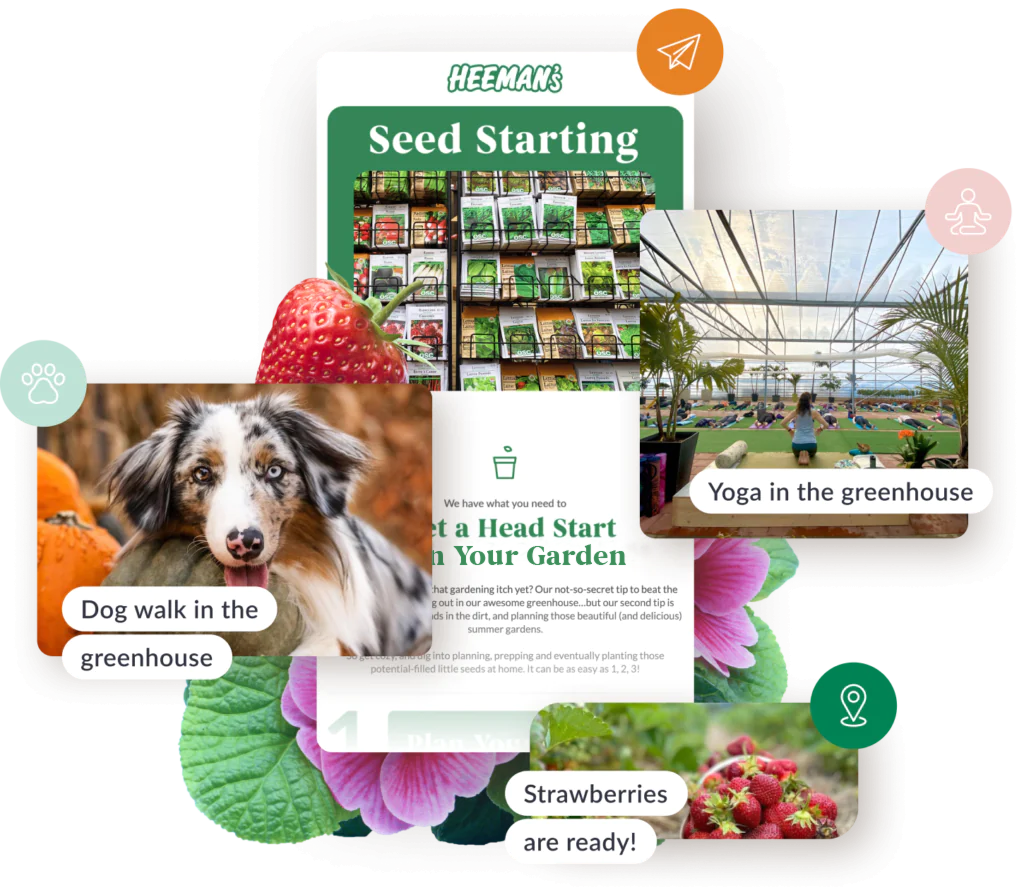
Sowing Seeds in the Fall
It might feel odd sowing seeds in the fall, right before the snow flies. But if you think about it, this always happens in nature! Flowers bloom, go to seed, seeds are dropped and spread around, nestling in before germinating the following Spring. While not all plants rely on Fall sowing, some – including a lot of our Ontario native plants – do, and they require that cold period over the winter (called cold stratification) before they’re able to germinate! This guide will dig into understanding how and what might work for fall seed sowing in Ontario.

What is cold stratification?
Nature has programmed seeds well. There is a period of dormancy that they experience to ensure that they don’t germinate on a sunny day in the middle of winter! This extended period of cold and the overall freeze/thaw cycle tells the seeds that it’s now safe to germinate. Some people will mimic this cycle by putting damp seeds in the fridge for 4-8 weeks before planting in the spring. You can skip this step by letting nature do its thing and get those seeds in the ground after the first freeze in the fall.
What are the benefits of sowing in the fall?
Especially when referring to native plants from Ontario, the survival/germination rates are higher for fall sowing, with plants sprouting earlier in the spring. Plants that germinate outdoors don’t have to experience any transplant shock going from indoors to outdoors, and they will often be more robust or more tolerant to drought and other local weather, having gone through natural cycles outdoors.
Seeding in the fall doesn’t require extra watering; increased fall rains do a great job! There are also fewer birds and insects in the winter that might be tempted to eat your new seeds.
How to sow seeds in the fall
- When to sow? In Ontario, the ideal time to sow seeds that require cold stratification is from mid-October to mid-November, after the first frost, but before the ground is too hard/frozen to work with.
- Read the label for your seeds and pay attention to the ideal conditions for your seeds. Choose your site to accommodate the correct sun exposure, moisture and soil requirements for your future plants.
- Ensure your site is prepared by removing all existing growth, such as grass and other plants. If your area includes invasives, do your best to loosen the soil and remove root systems as much as possible.
- Go ahead and scatter those seeds! You can mix with sand or other light soil if the seeds are extra small. Ensure good soil contact by walking on the seeds, or you can use a seed roller. You do not need to cover most fall plantings with soil, and there is no need to fertilize them or water them in.
- Make sure you mark or label your section! It’s sometimes hard to tell the difference between weeds sprouting and your new seedlings in the spring.
Keep in mind that if you’re establishing a new planting, especially native seeds, it might take a few years for all seeds to germinate and the patch to hit its stride! Have patience, and remember that the beauty of gardens might be that they’re always a work in progress!

What seeds can you sow in the fall?
Ontario native plants:
- Grey-Headed Coneflower | Ratibida pinnata | zones 3-9
- Purple Coneflower | Echinacea purpurea | zones 3-8
- Pale Purple Coneflower | Echinacea pallida | zones 3-8
- Cutleaf Coneflower | Rudbeckia laciniata | zones zones 3-8
- Cardinal Flower | Lobelia cardinalis | zones 4-9
- Wild Columbine | Aquilegia canadensis | zones 3-9
- Great Blue Lobelia | Lobelia siphilitica | zones 3-9
- Foxglove Beardtongue | Penstemon digitalis | zones 4-8
- Canada Tick Trefoil | Desmodium canadense | zones 3-7
- Rattlesnake Master | Eryngium yuccifolium | zones 3-9
- Hoary Vergain | Verbena stricta | zones 3-8
- Blue Vervain | Verbena hastata | zones 3-8
- Leadplant | Amorpha canescens | zones 3-8
- New York Ironweed | Veronia noveboracenis | zones 5-9
- Nodding Wild Onion | Allium cernuum | zones 3-8
- Oxeye Sunflower | Heliopsis helianthoides | zones 3-8
- Maximilian’s Sunflower | Helianthus maximiliani | zones 3-9
- Prairie Dock | Silphium terebinthinaceum | zones 4-8
- Boneset | Eupatorium perfoliatum | zones 3-8
- White Wild Indigo | Baptisia alba | zones 3-9
- Yellow Wild Indigo | Baptisia tinctoria | zones 3-9
- Dense Blazing Star | Liatris spicata | zones 3-10
- New England Aster | Symphyotrichum novae-angliae | zones 3-8
- Lanceleaf Coreopsis | Coreopsis lanceolata | zones 3-9
- Goldenrods and Milkweeds
Other popular non-native flowers:
- Poppies
- Cosmos
- Verbena
- Pansies
- Violas
- Perennial sweet peas
- Delphinium
- Some lupines




